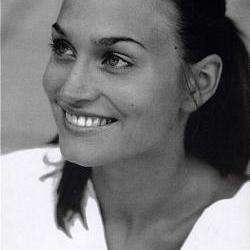Whether you are an opera historian, fashionista, dancer, or just a fan of top-notch singing and musicianship, Mark Morris’ brilliant realization of Orfeo ed Euridice, conducted by the imitable James Levine and with set design by Allen Moyer, is not to be missed.
Historically speaking, as the first of Christoph Willibald Gluck’s “reform operas”, Orfeo ed Euridice was a revolutionary breakthrough. In 1762, working closely with librettist Ranieri de’ Calzabigi, choreographer Gasparo Angiolini and director Giacomo Durazzo, Gluck premiered Orfeo ed Euridice in Vienna. The group ushered in a new aesthetic for the genre: one where emotion, text and drama took priority and where the best qualities of Italian opera seria and French opéra-comique were combined into an effective whole. This historical importance of Gluck’s masterpiece is underscored by Mark Morris’ brilliant creation, particularly in how he treats the chorus. Ensemble members, costumed elaborately by Isaac Mizrahi, appear as historical figures in rows of theater loges, framing the stage in a semicircle. Looking closely, the discerning viewer can spot Einstein, Scarlett O’Hara, John Calvin, Lady Di, George Washington and Cleopatra – among many others – as they comment on and observe the action below.
Dance and pantomime are also integrated into the plot, just as originally intended. Dressed in modern street clothes of muted blues and grays, dancers are omnipresent through the opening chorus, “Ah! Se interno a quest’uma funesta”, where Orfeo (Stephanie Blythe) mourns his dearly departed Euridice. Blythe’s rich, flexible voice and strong lower register is perfect for Orfeo, originally a castrato role, and she seems born to sing the part. In “Numi, barbari Numi”, Blythe’s agitation mounts until we meet Amor (Heidi Grant Murphy) who floats down from on high in a pink cardigan, khaki trousers, angel wings and tennis shoes to instruct Orfeo and set him on his quest.
Act II begins with the famous “Chi mai dell’Erebo”, where the Furies challenge Orfeo. Orfeo pleads his case in “Deh! Placatevi con me”, accompanying himself with a triplet motif played by a solo harp. Initially the furies respond with an aggressive “no!” backed by a magnificent, full orchestral sound. Their resolve slowly weakens, and eventually they accede to Orfeo’s request, allowing him access to Elysium via a massive steel staircase. Upon arrival Orfeo is greeted again by dancers, now clad in lightweight white and beige garb. Orfeo sings “Che puro ciel, che chiaro sol” as he searches for his beloved, accompanied by peaceful undulations from winds and strings, beautifully led by Levine. This act culminates with the presentation of a ravishing Danielle de Niese, clad in feathery white, to her husband in “Torno o bella, al tuo consorte”.
The final act opens on the pair navigating through a cavern of slick, black rock. Singing in dialogue, Orfeo counters Euridice’s pleas to look at her by attempting to hurry her out. De Niese’s beautiful voice handles the scene with ease and passion and her complaints finally turn Orfeo to her. With a quiet “Io manco, io moro” she is reclaimed by death a second time. Orfeo’s unadorned, starkly tragic “Che farò senza Euridice?” was a shocking departure from the virtuosic da capo arias of opera seria in 1762. There are no trills, no expansive coloratura, and no more than two tones sung per syllable. Capricious Amor appears just as Orfeo is about to end his life and restores Euridice to him, explaining that Orfeo’s suffering was sufficient to have earned happiness with his beloved. The joyous finale ensues, the ballet now in technicolor street clothes, dancing rustically as the entire cast sings the praises of love.


